- The Getty goddess in her new home in the archaeological museum in Aidone, Sicily.
- A terracotta Persephone on display in the same gallery as the goddess. Many experts now believe the Getty goddess is not Aphrodite.
- A Forest Service band leads a procession during the inauguration of the goddess’ exhibit in Aidone, Sicily.
- Politicians, police and media crowd the goddess in her new home.
- Italy’s Culture Minister and other officials herald the return of the goddess at a press conference.
- The authors in front of the Aidone Archaeological Museum on the day of the opening of the goddess exhibition.
- The authors in front of the goddess in her new home.
- The sign on a souvenir shop in Aidone, Sicily.
- T-shirts with images of the goddess have sprung up all around Aidone.
- Ancient marble busts of Persephone and Demeter, returned by an American collector to the Aidone archaeological museum.
- The sanctuary of Persephone and Demeter at the ruins of Morgantina, just outside Aidone.
- The Greek theater at the ruins of Morgantina.
- The vista of central Sicily from the ruins of Morgantina, where the statue of Aphrodite was illegally excavated in the late 1970s.
- Terracotta busts of the fertility goddesses Persephone and Demeter in the museum of Aidone, Sicily.
- Ancient sources say it was while picking flowers along the banks of this lake, a short drive from Morgantina, that Persephone was abducted by Hades and taken to the underworld.
- Archaeologist Malcolm Bell gives us a tour of Morgantina.
- Like the statue of Aphrodite, it is an acrolith – a body carved from local limestone and head and arms carved from marble imported from Greece.
- Judge Silvio Raffiotta, the first to pursue a legal case against the Aphrodite, grew up in a house overlooking the ruins of Morgantina, in central Sicily.
- A photo of the young Thomas Hoving, who dug at Morgantina as a Princeton student studying archaeology. Hoving went on to become director of the Metropolitan Museum of Art.
- An ancient Greek temple complex on the outskirts of Morgatina. Some believe one of these small temples may have housed the cult statue of Aphrodite, which locals say was discovered nearby.
- Jason Felch and Livia Borghese interviewing a local art dealer in Sicily.
- The private collection of a Sicilian art dealer
- The view of Mt Etna from the ruins of Morgantina, in the center of Sicily. As in ancient times, the region is considered the bread basket of Europe, known for its fertile volcanic soil.
- A typical hill town in central Sicily
- Fragments of ancient pottery found strewn about outside the ruins of Selinunte, Sicily. They were likely dug up by looters looking for more valuable booty.
- Ancient Greek settlers buried their dead in tombs carved from the living rock. Many, like this one outside Selinunte, Sicily, have been looted in search of pottery, gold and other artifacts.
- A local explains how looters, “tombarolo” in Italian, ply their trade.
- An acrolithic statue — part limestone, part marble – in the archaeological museum in Palermo, Sicily. Ancient Greeks who settled in Sicily used marble sparingly because it had to be imported from the Greek islands.
- A dramatic scene from an ancient metope, which adorned the side of a Greek temple.
- It was from this temple complex in Selinunte, Sicily that the Getty’s Lex Sacra was illegally excavated. The lead tablet bore an inscription laying out the proceedings of an ancient Greek ritual.
- The landscape outside Trapani, Sicily.
- The Most Wanted chart in the office of Mafia investigators in Sicily. Authorities have long believed the Mafia plays some role in the illicit antiquities trade.
- Windmills and salt flats near the island of Mozia, Sicily.
- Rosario Alaimo, the Sicilian geologist who studied the limestone sample taken from the Aphrodite.
- A tiny sample of the limestone of the Getty’s statue of Aphrodite was sent to experts in Sicily, who concluded it had come from an ancient quarry an hour away from Morgatina.
- Co-author Jason Felch outside the headquarters of the Carabinieri’s art squad, a few blocks from the Parthenon in Rome.
- The authors worked closely with Greek investigative journalist Nikolas Zirganos during their investigation of the illicit antiquities trade.
- Ralph Frammolino and Greek reporter Nikolas Zirganos compare notes on a reporting trip to Rome.
- Paolo Ferri was the first foreign prosecutor to criminally indict an American curator.
- Italian prosecutor Paolo Ferri after a meeting with Greek prosecutor Yiannis Diotis.
- Nikolas Zirganos with members of the Greek art sqaud, celebrating the return of the golden funerary wreath.
- Jason Felch on a reporting trip to Athens
- Ralph Frammolino interviewing Wolf-Dieter Heilmeyer on a reporting trip to Germany.
- Jason Felch with ancient Roman brothel tokens.











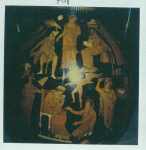

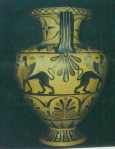

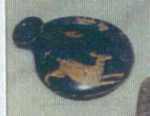


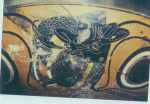


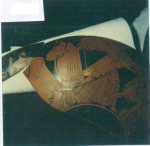
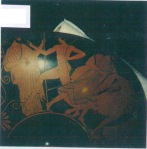


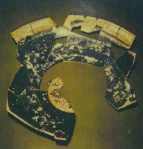





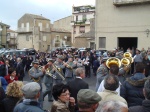


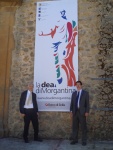


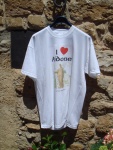



















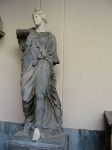


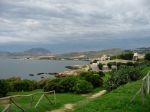


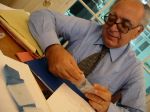










Pingback: The Goddess Goes Home | CHASING APHRODITE